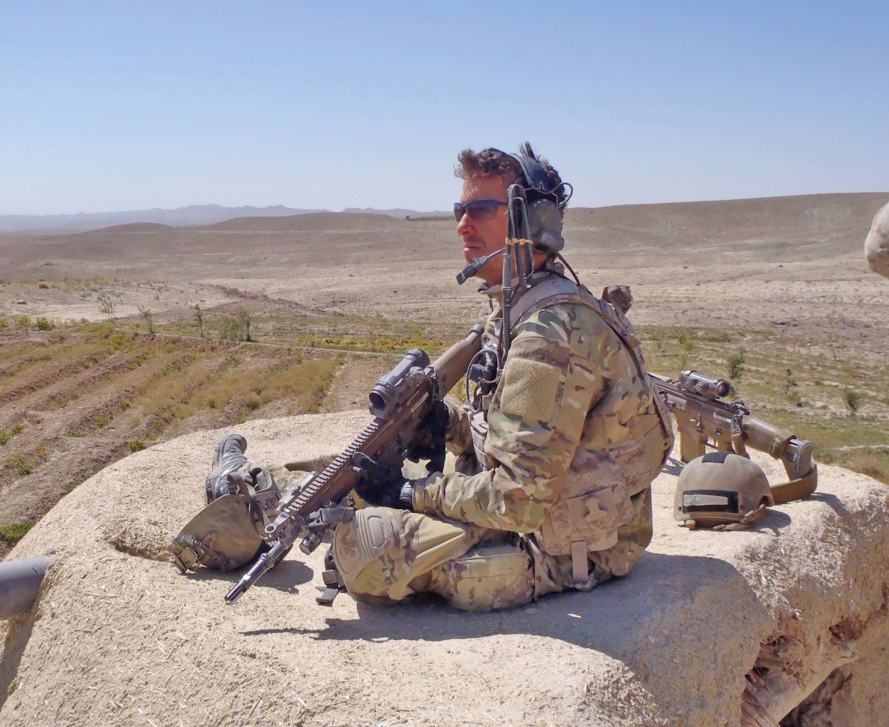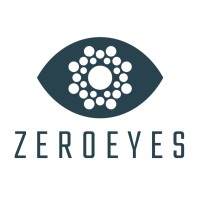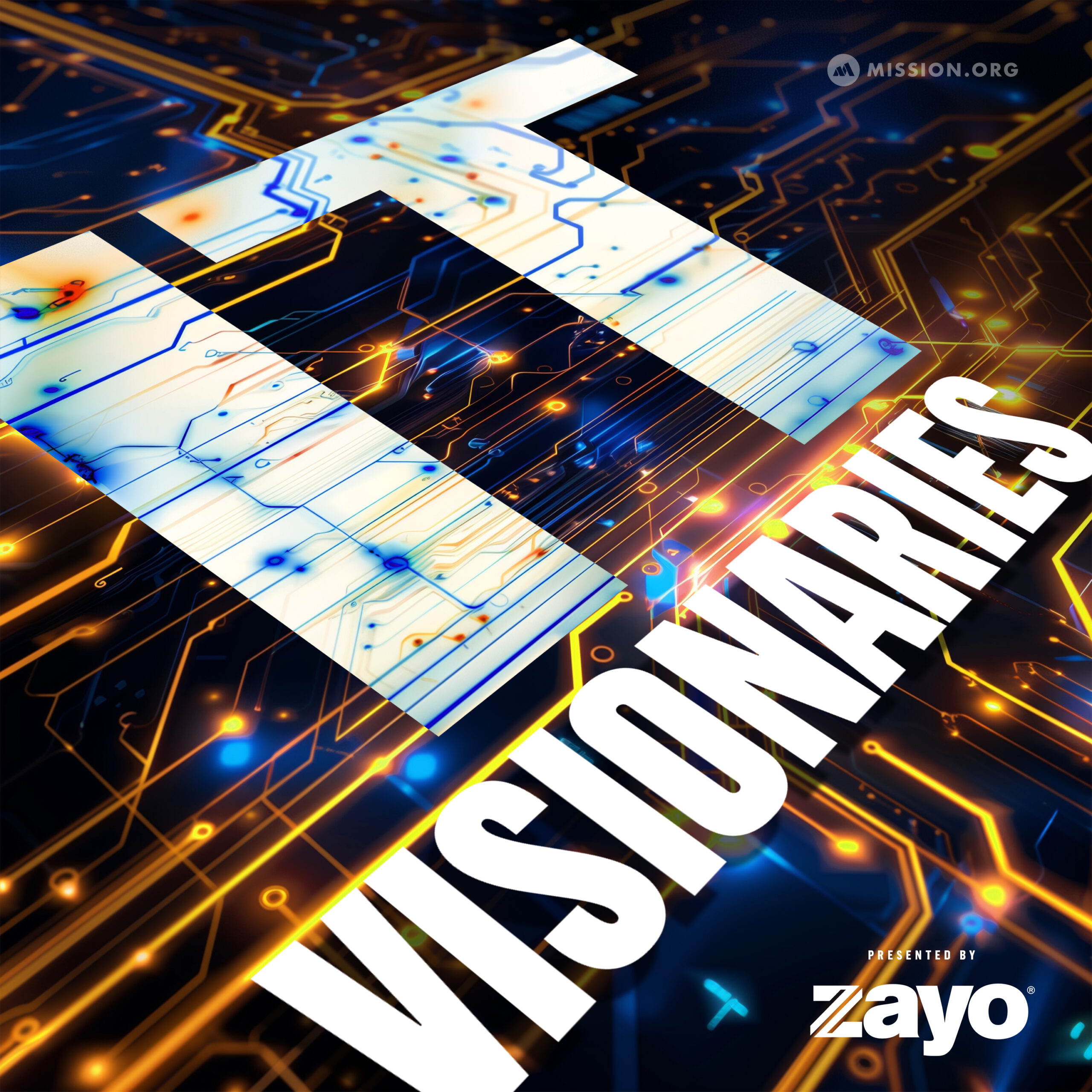Or listen in your favorite podcast app
Apple Podcasts / Google Podcasts / Spotify
Through the first half of 2020, the United States has reported nearly 30,000 gun violence deaths to date. And if you ask Rob Huberty, that number is 30,000 too many. As a former Navy SEAL turned entrepreneur, the rising levels of gun violence each year frustrates him, but now as the Chief Operating Officer of ZeroEyes, Rob is doing something about those numbers.
Rob says, “When you see something you think you need, you go create it.” So he did. On this episode of IT Visionaries, Rob discusses how he’s helping to prevent shootings at first sight, rather than first shot. And he also details his journey from a NAVY SEAL to the private sector and the challenges of running a business.
Key Takeaways
- Learning on the Fly: When you embark on the start-up journey, you have to be prepared for anything and willing to do the unglamorous jobs in order to move the business forward.
- Be Diligent, Be Patient: When developing datasets for A.I., you have to be both diligent and patient. It’s going to take time to develop the system and teach the algorithm what it needs to look for. Be prepared to put in long hours to ensure your training the system effectively.
- A Little Less Reactive, A Little More Proactive: Security systems are important, but very reactive. If you’re just deploying basic security systems, you are not preventing a problem — you’re just capturing it. It’s important to be proactive.
—–
For a more in-depth look at this episode, check out the article below.
Through the first half of 2020 the United States has reported nearly 30,000 gun violence deaths to date. And if you ask Rob Huberty, that number is 30,000 too many. As a former Navy SEAL turned entrepreneur, the rising level of gun violence each year frustrates him.
But in his own words, “When you see something you think you need, you go create it.” So he did. Huberty, the COO of ZeroEyes, joined IT Visionaries and discussed his journey from NAVY SEAL to the private sector. And he dove into the challenges of running a business, and how A.I. is helping to prevent mass shootings.
ZeroEyes is a team of US military veterans, consultants, and technologists who are working to protect the United States and countries around the globe from gun violence through technology. By utilizing artificial intelligence to actively monitor camera feeds to detect weapons, ZeroEyes technology can detect a potential shooter before they ever enter a building.
“We are going to stop a threat at first sight rather than first shot,” Huberty said.
According to Huberty, in most mass shootings that occur, the shooter can walk around with a gun fully exposed for minutes before shots are ever fired — almost completely undetected. The goal at ZeroEyes is to reduce that threat before it ever escalates to a shot being fired.
“It’s really disheartening when you look at Parkland, when you look at Sandy Hook, when you look at Columbine,” he said. “There’s footage of these shooters carrying their guns, walking around, and no one watches these cameras. The entire thing is that ZeroEyes can be the software that watches them for you.”
The idea for the technology stemmed from one of those tragic incidents. After a shooting in Parkland, Florida, claimed the lives of 17-students, Huberty and his partner decided they had seen enough. They had to act. And they did. Huberty and his co-founders began to strategize ways they could help solve this problem by utilizing technology and their military backgrounds.
“I’d seen all these computer vision technologies out there and thought, ‘Why can’t we just detect guns to do something about this?’” he said. “To use the A.I. and security cameras, it became a little bit obvious. You’ve seen these kinds of things exist in movies. We assumed that it already existed, but it did not.”
At the time, Huberty didn’t have much experience working with A.I., or running a business, and he didn’t know how datasets could solve their mission. So he began by asking questions, gathering insights, and those conversations eventually led to solutions.
“We had met a bunch of people who [knew a lot about how A.I. worked] and we asked, ‘Is this possible?’” Huberty recalled. “[They said] you could do it really fast, but in order to be good at it, it’s painful. And with our military backgrounds painful is okay, hard work is no problem.”
One of the most difficult hurdles ZeroEyes faced was teaching the system to accurately detect and identify the guns they needed it to. But in order to accomplish that task, Huberty remembers a painstaking, but rewarding experience.
“We had to create that data set ourselves,” Huberty said. “Literally it started out in our CEO’s basement. We started walking around with guns and taking pictures of us with guns in order to detect them. Then we realized that we had to use the same type of guns that we wanted to detect with the same type of cameras. Then we had to figure out what did and did not work and this was just absolutely as painstakingly and detail-oriented as it could possibly be.”
Once the technology was ready to market, Huberty realized he had another problem. It was one thing for him to understand how the technology could be used and implemented, it was another thing to convey those same thoughts to potential users of the technology.
“When you say A.I., a lot of people’s eyes glaze over and they’re like, ‘Oh, that’s too complicated,’” he said. “So we have to get past that early adopter hurdle and cross the chasm, to convince people that this works. We do live demonstrations in front of people. Anybody who’s very talented can make the complicated appear simple. And that’s really what we’re trying to do. We’re using A.I., we’re using algorithms, but when you show what it does, that it’s making one determination really efficiently, and that that’s something that’s going to improve your life in a way that is dramatic, and that could potentially help you avoid the most dramatic experience possible, you’re going to be a believer.”
The last obstacle Huberty and his team continue to work on is that in order for their technology to be successful, schools, companies, and other clients must have existing camera operations to tap into. And even if those cameras do exist, there are hurdles to jump over depending on the age and capabilities of the system in place.
“[Cameras] are so varying in terms of capabilities, age, and sophistication,” Huberty said. “I’ve done this for the last few years, I’ve seen the highs and the lows. … What I will say is that no matter what, I think that the cameras in the United States, are just getting better and better.”
But there is another problem with cameras that Huberty wants everyone to know: while cameras are great and useful, if they aren’t helping you prevent crime in real-time, they are just a tool that is not being fully utilized.
“People add cameras because it’s cost-effective and they think it makes them safer,” he said. “But if it’s just used as a forensic tool after the fact, I don’t really see the value in it. It needs to be proactive. And that’s why we created our technology.”
—
To hear the entire discussion, tune into IT Visionaries here.




